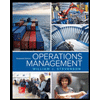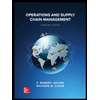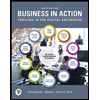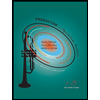1.16) When should you move to the Improve phase of the DMAIC process? (a) After collecting the related data and facts about the variables that can influence the problem (b) After defining potential solutions to the problem (c) After ensuring whether a particular solution works (d) After understanding the causes of the problem
1.16) When should you move to the Improve phase of the DMAIC process? (a) After collecting the related data and facts about the variables that can influence the problem (b) After defining potential solutions to the problem (c) After ensuring whether a particular solution works (d) After understanding the causes of the problem
Practical Management Science
6th Edition
ISBN:9781337406659
Author:WINSTON, Wayne L.
Publisher:WINSTON, Wayne L.
Chapter2: Introduction To Spreadsheet Modeling
Section: Chapter Questions
Problem 20P: Julie James is opening a lemonade stand. She believes the fixed cost per week of running the stand...
Related questions
Question
Plzz give all the ans thank you

Transcribed Image Text:1.16) When should you move to the Improve phase of the DMAIC process?
(a) After collecting the related data and facts about the variables that can influence
the problem
(b) After defining potential solutions to the problem
(c) After ensuring whether a particular solution works
(d) After understanding the causes of the problem
1.17) Which of the following statements is correct about a DOE?
(a) It is considered as a step-by-step process for identifying all possible failure in a
design
(b) It is used to determine the relationship between factors affecting a process and
the output of that process
(c) It is used to study how a process changes over a time
(d) None of the above
1.18) In comparison to a full-factorial DOE, a traditional OFAT approach will:
(a) miss interactions
(b) gain efficiencies
(c) save time
(d) cost less
1.19) If the number of runs required for a full-factorial experiment is cost-prohibitive,
which of the following experiments would have the same number of variables but
fewer runs?
(a) Completely randomized factorial (b) Replicated factorial
(c) Multilevel factorial
(d) Fractional factorial
1.20) Process capability indices, c, and Cpk, are:
(a) Productivity measures
(b) Financial measures
(c) Quality measures
(d) Time measures
||
Expert Solution
This question has been solved!
Explore an expertly crafted, step-by-step solution for a thorough understanding of key concepts.
This is a popular solution!
Trending now
This is a popular solution!
Step by step
Solved in 2 steps

Knowledge Booster
Learn more about
Need a deep-dive on the concept behind this application? Look no further. Learn more about this topic, operations-management and related others by exploring similar questions and additional content below.Recommended textbooks for you

Practical Management Science
Operations Management
ISBN:
9781337406659
Author:
WINSTON, Wayne L.
Publisher:
Cengage,

Operations Management
Operations Management
ISBN:
9781259667473
Author:
William J Stevenson
Publisher:
McGraw-Hill Education

Operations and Supply Chain Management (Mcgraw-hi…
Operations Management
ISBN:
9781259666100
Author:
F. Robert Jacobs, Richard B Chase
Publisher:
McGraw-Hill Education

Practical Management Science
Operations Management
ISBN:
9781337406659
Author:
WINSTON, Wayne L.
Publisher:
Cengage,

Operations Management
Operations Management
ISBN:
9781259667473
Author:
William J Stevenson
Publisher:
McGraw-Hill Education

Operations and Supply Chain Management (Mcgraw-hi…
Operations Management
ISBN:
9781259666100
Author:
F. Robert Jacobs, Richard B Chase
Publisher:
McGraw-Hill Education


Purchasing and Supply Chain Management
Operations Management
ISBN:
9781285869681
Author:
Robert M. Monczka, Robert B. Handfield, Larry C. Giunipero, James L. Patterson
Publisher:
Cengage Learning

Production and Operations Analysis, Seventh Editi…
Operations Management
ISBN:
9781478623069
Author:
Steven Nahmias, Tava Lennon Olsen
Publisher:
Waveland Press, Inc.